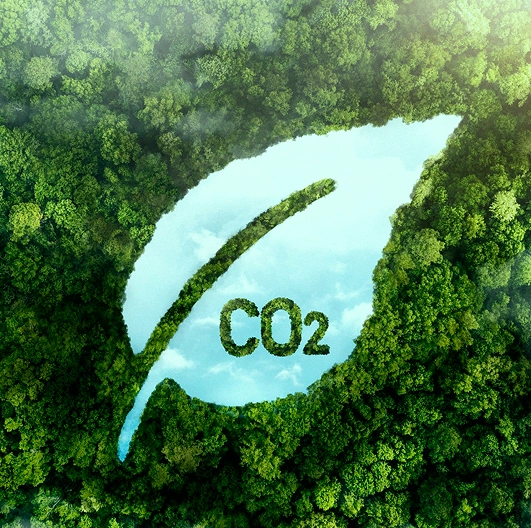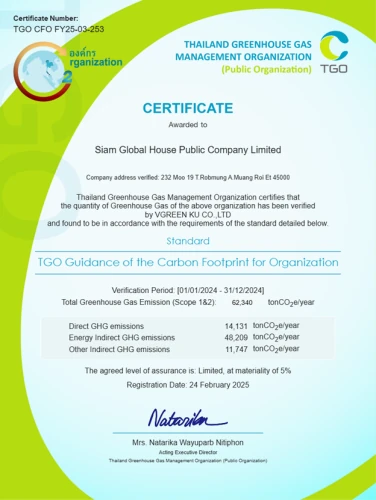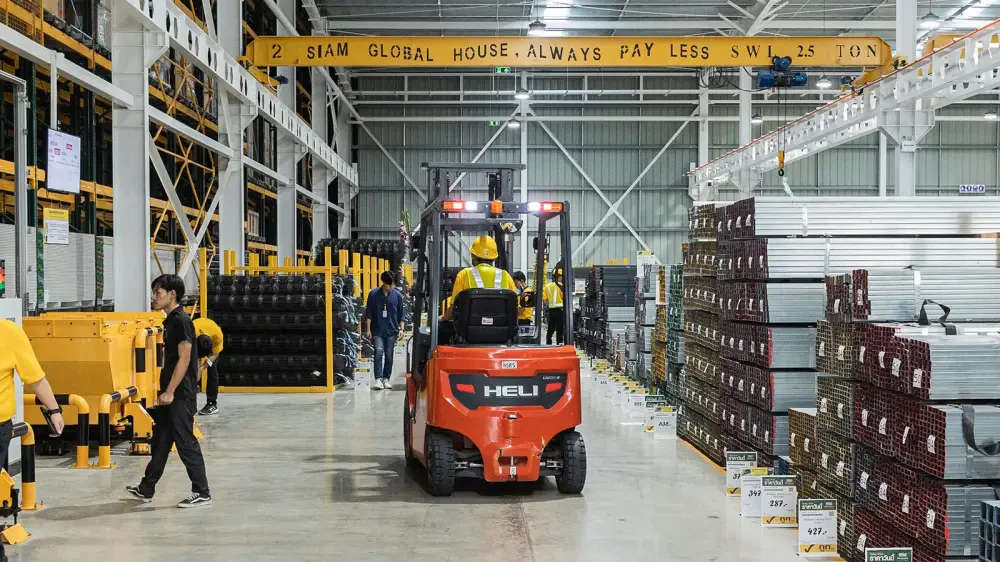
Climate Change
Supporting the SDGs Goals
SDGs
Goal 7:
Goal 12:
Goal 13:
Goal 14:
Goal 15:
Goal and Performance Highlights
Long-Term Goals
- 1 By 2030, the amount of greenhouse gas emissions Scope 1 and Scope 2 per total revenue has decreased by 20% from the base year (Base year: 2022.)
- 2 By 2050, the amount of net greenhouse gas emissions is zero (Net Zero.)
Strategy
Performance Highlight

Challenges and Opportunities
Commitment
The Company is committed to being a part of the solution to climate change, recognizing that climate change is an issue that affects the sustainability and well-being of humanity. Globally, efforts have been made to reduce greenhouse gas emissions to mitigate its impact. The Company places importance on the Carbon Footprint for Organization (CFO), which began in 2022, to acknowledge the amount of greenhouse gases emitted from the Company’s activities and to monitor the results of activities aimed at reducing greenhouse gas emissions.

Risk Management and Opportunities
The Company assesses climate-related risks and opportunities to identify the types of risks it may face. The Company places importance on potential risks and opportunities in order to develop action plans that mitigate adverse impacts. The Company evaluates both physical risks and transition risks across three time horizons: short-term (1–3 years), medium-term (3–10 years), and long-term (over 10 years). The assessment of climate-related opportunities also considers potential impacts on financial reporting. These assessments are conducted in accordance with the guidelines of the Task Force on Climate-related Financial Disclosures (TCFD) and IFRS S2.
Climate-related Risk Assessment
Transition Risks
| Climate-Related Risk | Potential Financial Impacts |
|---|---|
|
Policy and Legal
|
|
|
Technology
|
|
|
Marketing
|
|
|
Reputation
|
|
Physical Risk
| Climate-Related Risk | Potential Financial Impacts |
|---|---|
|
Acute
Chronic
|
|
Management Approach and Value Creation
Management guidelines
The Company operates a retail business specializing in construction materials and home decoration products, so its activities inherently consume energy and natural resources. Acknowledging its environmental impact, the Company is committed to reducing both direct (Scope 1) and indirect (Scope 2) greenhouse gas emissions. Key initiatives include transitioning from fuel-based equipment, tools, and vehicles to electric alternatives, utilizing solar energy to replace transmission-line electricity, and adopting energy conservation measures to reduce electricity consumption, which accounts for 58% of the Company’s total greenhouse gas emissions. These efforts reflect the Company’s dedication to sustainability and minimizing its carbon footprint.

Carbon Footprint for Organization (CFO)
Since 2022, the Company has been assessing its carbon footprint or GHG emissions, shown in a ton of carbon dioxide equivalent (Ton CO2e), caused by its activities and operations, such as fuel combustion, electricity consumption, waste management and transportation. All has been reviewed and validated by VGREEN KU Co., Ltd., an auditing firm for carbon footprint of organizations registered with Thailand Greenhouse Gas Management Organization (Public Organization.)
Carbon Footprint for Organization: CFO in 2024
| GHG Emission Amount (Ton CO2e) | 2022 | 2023 | 2024 |
|---|---|---|---|
| Direct greenhouse gas emissions (Scope 1) | 14,529 | 11,142 | 14,131 |
| Indirect greenhouse gas emissions from electricity consumption (Scope 2) | 33,794 | 36,998 | 48,209 |
| Total indirect greenhouse gas emissions (Scope 3) | 9,911 | 9,314 | 11,747 |
| 1. Purchased goods and services | 881.24 | 577.73 | 606.67 |
| 2. Capital goods | - | - | - |
| 3. Fuel-and energy-related activities | 8,827.56 | 8,631.15 | 10,837.75 |
| 4. Upstream transportation and distribution | 5.86 | 36.5 | 5.23 |
| 5. Waste generated in operations | - | - | 234.84 |
| 6. Business Travel | - | - | - |
| 7. Employee commuting | - | - | - |
| 8. Upstream Leased Assets | N/A | N/A | N/A |
| 9. Downstream transportation and distribution | - | - | - |
| 10. Processing of sold products | N/A | N/A | N/A |
| 11. Use of sold products | - | - | - |
| 12. End-of-life treatment of sold products | 152.85 | 25.32 | 22.00 |
| 13. Downstream Leased Assets | 43.29 | 42.43 | 39.88 |
| 14. Franchises | N/A | N/A | N/A |
| 15. Investments | - | - | - |
Remark: The Company assessed its carbon footprint of organizations using data from January 1 to December 31, 2024 and passed the verification.





